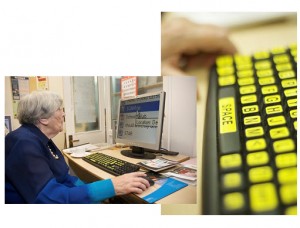 The goal of designing a website or software for accessibility is to enable all users, regardless of impairment or disability, to access and use it. Web accessibility and usability complement each other. The intent of web accessibility standards and guidelines is not just to make web content accessible, but to make it easily accessible—that is, usable.
The goal of designing a website or software for accessibility is to enable all users, regardless of impairment or disability, to access and use it. Web accessibility and usability complement each other. The intent of web accessibility standards and guidelines is not just to make web content accessible, but to make it easily accessible—that is, usable.
TecEd uses multiple methods to evaluate the accessibility of your website or software. We also perform usability testing with users who have impairments, watching them interact with a website or software to learn about its usability as well as its accessibility.
What is Web Accessible Design?
Accessible design specifically addresses the needs of people with:
- Vision impairments, including blindness, weak or low vision, photosensitivity, or color blindness.
- Hearing impairments, including deafness or poor hearing.
- Motor impairments, such as the inability to handle a mouse or operate a typical keyboard, whether through paralysis, limb loss or damage, pain, tremor, or another condition from injury or disease.
- Speech, cognitive, or learning impairments.
Individuals with impairments often use assistive technologies to access and use websites and software. Examples of assistive technologies are screen reader software, screen magnifier software, and keyboard alternatives such as mouthsticks. Incorporating accessible design into a website largely involves accommodating these assistive technologies.
Web Accessibility in Practice
One tenet of web accessibility is that all users should have a reasonably equivalent experience of a piece of content. An important method for providing an equivalent experience is to present alternative formats of your content, so that users do not need to rely on a single sense or ability to experience the content. For example, you can provide text describing images and animations that is read by a screen reader.
Another tenet is that the information on a page should be well structured, which enables users of assistive technologies to navigate content more effectively. For example, headings should be properly ordered and nested, and data tables should identify the column and row for each cell of content.
What is Universal Design?
While accessible design is commonly considered in the context of impairments or disabilities, it offers benefits and improves the user experience for everyone. For example, web accessibility improvements often help users of mobile devices with small viewing screens, people in noisy or low-light environments, and people who have new or temporary impairments due to aging, injury, or illness.
With universal design, you can make it easier for people with and without impairments to use your website, in the same way accessible sidewalks improve mobility for people with a rolling suitcase as well as people in wheelchairs. A site designed for all users can contain audio, video, and animation, as long as this content is made accessible. Universal design is not about subtracting rich content and multimedia from a website, but rather about adding alternative formats and other accessibility improvements.
Benefits of an Accessible Website
Making your website accessible will:
- Draw additional visitors who may not have been able to access the site before.
- Give you an advantage over competitors whose sites are not accessible.
- Address the requirements of the U.S. Federal government and other organizations that require accessibility compliance for doing business with them.
- Through universal design, reduce the time spent on development and maintenance by having a single version of your site.
- Help your organization be perceived as socially responsible.
To learn more about how TecEd’s web accessibility services can help you, please contact us at inquiries@teced.com.
Picture Source: flickr.com/photos/bisgovuk/4400585723/ and flickr.com/photos/bisgovuk/4400584091/in/photostream/

